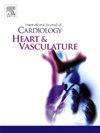Transcatheter or surgical treatment of paravalvular leaks: A meta-analysis of 13 studies and 2003 patients
IF 2.5
Q2 CARDIAC & CARDIOVASCULAR SYSTEMS
引用次数: 0
Abstract
Background
Significant paravalvular leak is a rare but serious complication of heart valve replacement, leading to symptomatic heart failure and hemolysis. Due to the paucity of comparative data between surgical and transcatheter paravalvular leak correction, we performed a systematic review and meta-analysis of available studies.
Methods
Studies comparing transcatheter and surgical treatment of paravalvular leak were systematically identified. Short-term all-cause mortality was the primary outcome. Technical and procedural success, 30-day persistence of significant paravalvular leak, length of hospital stay and long-term mortality, persistence of symptoms and paravalvular leak were the main secondary endpoints.
Results
Thirteen studies with 2003 patients were included, treating in most of the cases a mitral prothesis. Transcatheter closure was associated with lower short-term mortality rate (30 days OR 0.28, 95 % CI 0.18–0.42, p < 0.001) compared to surgical treatment. Technical and procedural success did not differ among the two groups. 30-day and long-term rates of persistence of moderate or severe paravalvular leak were higher in the transcatheter group (OR 3.56, 95 % CI 1.49–8.49, p = 0.004 and OR 2.20, 95 % CI 1.27–3.81, p = 0.005 respectively). Long-term death and re-hospitalization events did not differ among the two treatment modalities. The mean difference in days of length of stay was significantly lower in the transcatheter group (mean difference −9.66, 95 % CI −12.37 to −6.94, p < 0.001).
Conclusion
Transcatheter closure of paravalvular leaks is associated with lower short-term mortality rates but higher persistence of moderate-severe paravalvular leak and heart failure symptoms at short and long-term follow-up compared to surgical treatment.

求助全文
约1分钟内获得全文
求助全文
来源期刊

IJC Heart and Vasculature
Medicine-Cardiology and Cardiovascular Medicine
CiteScore
4.90
自引率
10.30%
发文量
216
审稿时长
56 days
期刊介绍:
IJC Heart & Vasculature is an online-only, open-access journal dedicated to publishing original articles and reviews (also Editorials and Letters to the Editor) which report on structural and functional cardiovascular pathology, with an emphasis on imaging and disease pathophysiology. Articles must be authentic, educational, clinically relevant, and original in their content and scientific approach. IJC Heart & Vasculature requires the highest standards of scientific integrity in order to promote reliable, reproducible and verifiable research findings. All authors are advised to consult the Principles of Ethical Publishing in the International Journal of Cardiology before submitting a manuscript. Submission of a manuscript to this journal gives the publisher the right to publish that paper if it is accepted. Manuscripts may be edited to improve clarity and expression.
 求助内容:
求助内容: 应助结果提醒方式:
应助结果提醒方式:


